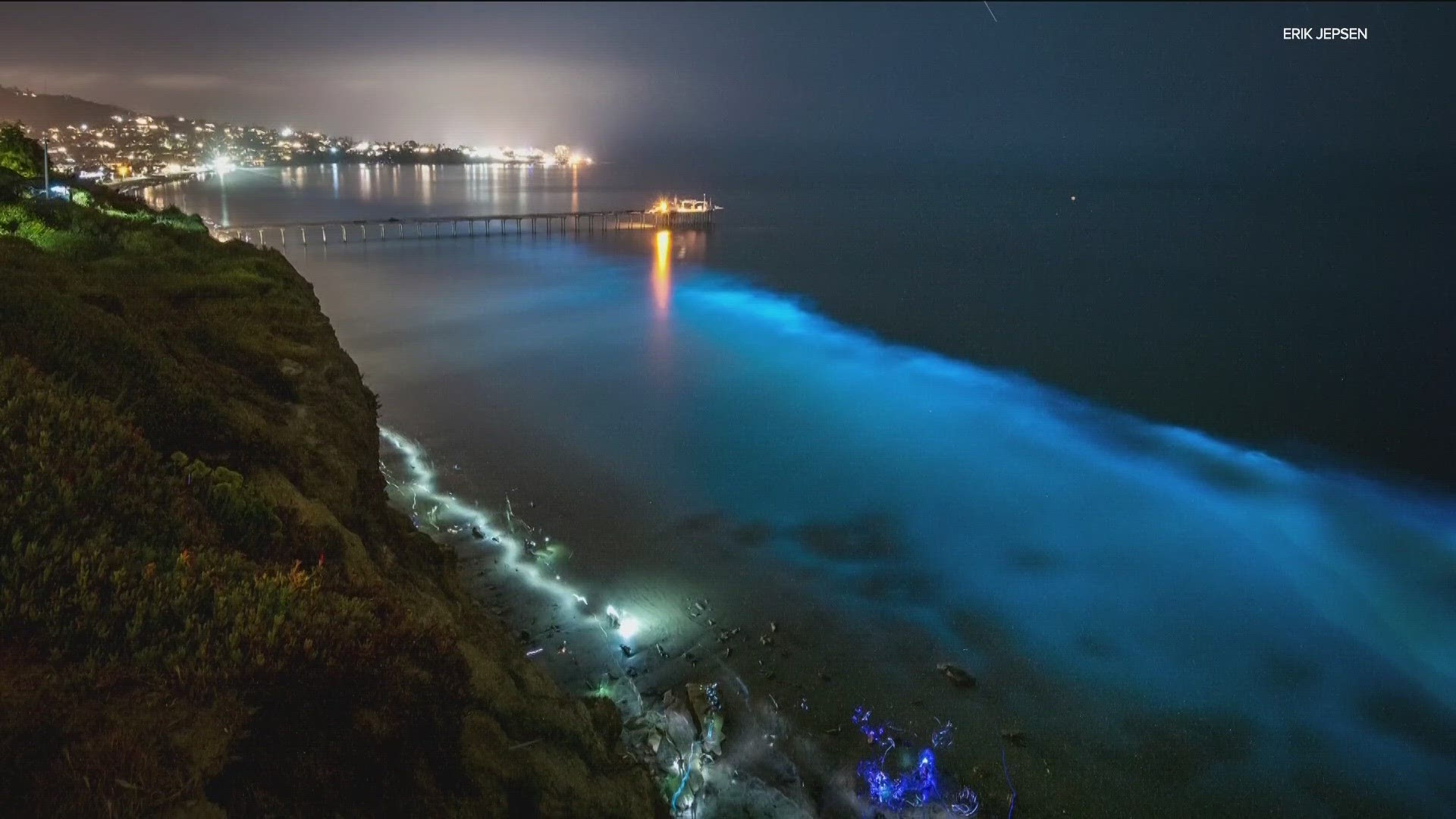SAN DIEGO — We’ve seen the incredible images of the blue waves around San Diego. And now we know a bit more about the teeny tiny marine algae that causes them.
CBS 8’s Neda Iranpour takes a deep dive into the latest research.
If you’ve searched “San Diego’s beaches” or anything “UC San Diego” then you may have come across the work of Erik Jepsen, the campus photographer.
He’s often drawn to the coastline capturing its beauty with his lens.
And of all the photos he’s taken in his lifetime, Jepsen said bioluminescence is among his favorites, “when there's like a really powerful bloom you can go to shore and kick the water and it lights up blue it's really cool to see.”
He is especially proud of an image of a wave lighting up as a surfer glides through phytoplankton, “it’s got to be very difficult to catch a wave at night.”
But it’s not as difficult to catch the bioluminescence as it used to be, “before like a decade ago you'd see the bioluminescence once every 3 years. Now you see it 3-4 times a year, so the frequency has definitely increased.”
The reason behind the more frequent findings is something oceanographers at Scripps Institution of Oceanography are looking into.
“We’re still trying to understand how these events are changing as our oceans change,” said Drew Lucas, an Oceanographer at Scripps Institution of Oceanography and with UC San Diego’s Department of Mechanical and Aerospace Engineering.
“Every day I come to work with the possibility of learning something new with the ocean,” said Lucas.
And in his teams’ research, they discovered some fascinating behavior by the glow-causing phytoplankton. The specific plankton is called L. Polyedra and it’s smaller than a human hair. But it’s faster than a mako shark as it goes 10 body lengths per second, and it does so for 18 or more hours.
Lucas said, “An analogy I might use is the ‘Michael Phelps’ but even faster than Phelps because he can't handle a mako shark.”
They're fast and they swim up and down from the surface of the ocean to the sea floor, “from surface to deeper than 100 feet in an afternoon.”
Using a tool called the Wirewalker, Lucas can follow the L. Polyedra. They discovered during the day they photosynthesize by being close to the ocean surface, gaining energy from the sun. That’s when you may see a rusty reddish color over the ocean which is a sign of a big bloom.
And after sunset, many of them take deep dives in search of nutrients. But not all go down at once, which is why you see the blue glow, appearing when the L. Polyedra gets agitated.
All of this new research is based on the 2020 bloom, one of the strongest ever recorded at Scripps. They had prime conditions then, including warmer temperatures and calm conditions, “Once they get cooking, they can dominate.”
So dominant, that they become the only plankton players. The bloom of 2020, lasted more than 2 months. But when they die off, so can fish and other marine life. As the algae decomposes, it takes away oxygen from the water, essentially suffocating life below it.
Lucas said, “They really can change our ecosystem. So, our ability to measure that and monitor that really projects our ability to protect valuable resource here in San Diego.” That’s why Lucas is constantly trying to create new measuring tools and he spends months at sea to learn more about the ocean.
“There's that old saying that we know more about Mars. It’s still evocative that the ocean is still vast, very deep, very difficult so we're still really in exploration phase,” said Lucas.
Exploration is something Jepsen also appreciates,which is why you’ll likely see him on campus or at the beach, snapping photo after photo. He is using his keen eye to show that science is beautiful.
To learn more, you can also read this press release by Scripps Institution of Oceanography.

